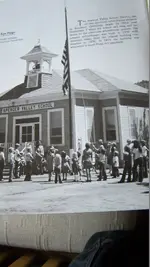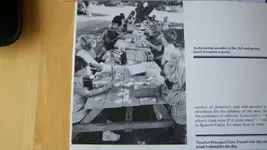thanx for the additional info back-of-boat. I will reconn. the area for any target concentrations. My buddy and I make an annual trek down that way, to the imperial county deserts, high mountain deserts, Riverside county, etc.. We are usually hunting the old emigrant stage stops (watering holes, etc...) and ruinsy type areas. But will make a point of checking your spot. If I find something with your grandfather's name on it, I'll give it to you !

We have also made sport of hunting down some of the old camping grounds of the Julian area. Because as you know: That was the mountain playground of the people of San Diego , and desert (Brawley, El Centro, etc...) area. There were numerous scouts camps, fraternal camps, church camps, CCC camps, etc.... dotting the mountains up there.
But we didn't make any point of researching any of the 1-room school house sites. Since, truth be told, they're usually not too good. Prior to the 1940s or so, kids honestly didn't carry that much change. So unless they doubled as some sort of adult activity (community hall, grange, church, etc...) then they can often be stingy.
I've worked a lot of virgin 1-room school houses around the state, and found this to be true. Or humorously, the following scenario: If a 1 room school house was used from the 1890s to the 1940s: You start finding conductive targets (buttons, pencil tops, bullet shells, etc...). So you get excited knowing that the site is either virgin, or hardly worked at all. Yet the only coin to surface is perhaps a single '20's wheat (which has 2 decades of wear on it), and a few '40s loss-coins . And you ask yourself: "ok, where's the coins from the 1890s to 1920s ??" "Why only a few coins lost in the very last years of the schools usage time-frame ?". It's because the post-depression and post wwII era economy was more prosperous . For the first time, kids might have a coin or two in their pocket. But prior to the 1940s, it truly was rare for country kids to have any reason to be carrying money to school.
But starting in the 1950s, it became common-place. Like the school lunch programs (where every kid brings a quarter to school for their hot lunch). And the school milk (where you bring your nickel or dime for milk). And so forth.
We'll check it out though.





